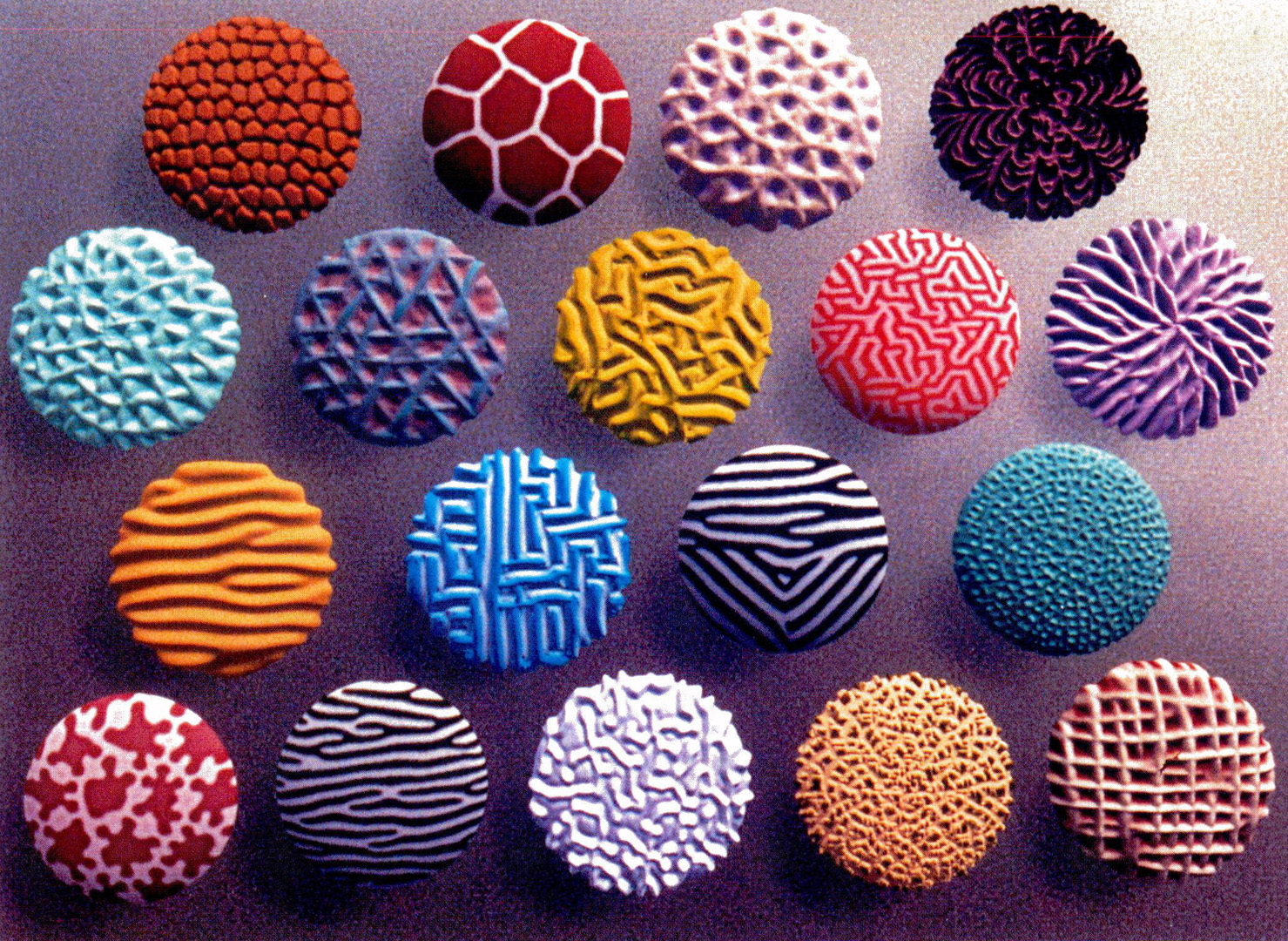“Reaction-diffusion textures” by Witkin and Kass
Conference:
Type(s):
Title:
- Reaction-diffusion textures
Presenter(s)/Author(s):
Abstract:
We present a method for texture synthesis based on the simulation of a process of local nonlinear interaction, called reaction-diffusion, which has been proposed as a model of biological pattern formation. We extend traditional reaction-diffusion systems by allowing anisotropic and spatially non-uniform diffusion, as well as multiple competing directions of diffusion. We adapt reaction-diffusion system to the needs of computer graphics by presenting a method to synthesize patterns which compensate for the effects of non-uniform surface parameterization. Finally, we develop efficient algorithms for simulating reaction-diffusion systems and display a collection of resulting textures using standard texture- and displacement-mapping techniques.
References:
1. Jonathan Bard and lan Lauder. How well does turing’s theory of morphogenesis work? Journal of Theoretical Biology, 45:501-531, 1974.
2. Jonathan B.L. Bard. A model for generating aspects of zebra and other mammalian coat patterns. Journal of Theoretical Biology, 93:501-531, 1981.
3. Michael Barnsley. Fractals Everywhere. Academic Press, San Diego, 1988.
4. R. N. Bracewell. The Fourier Transform and its Applications. McGraw-Hill, New York, 1986.
5. P. J. Burt. Fast hierarchical correlations with gaussianlike kernels. Technical Report TR 860, Dept. of Computer Science, U. of Maryland, 1980.
6. S. Ei and M. Mimura. Pattern formation in heterogeneous reaction-diffusion-advection systems with an application to population dynamics. SIAM J. on Mathematical Analysis, 21(2):346-361, 1990.
7. Andre Gagalowicz and Song De Ma. Sequential synthesis of natural textures. CVGIP, 30:289-315, 1985.
8. W. Hackbusch. Multi-Grid Methods and Applications. Springer-Verlag, New York, 1985.
9. Michael Kass and Andrew Witkin. Analyzing oriented patterns. Computer Vision, Graphics and Image Processing, 37:362-385, 1987.
10. Granino Korn and Thresa Korn. Mathematical Handbook for Scientists and Engineers. McGraw Hill, New York, 1968.
11. K. Kunish and H. Schelch. Parameter estimation in a special reaction-diffusion system modelling man-environment diseases. Journal of Mathematical Biology, 27(6):633-665, 1989.
12. B. Mandelbrot. Fractals: Form, Chance, and Dimension. W.H. Freeman, San Fransico, 1977.
13. Kazunori Miyata. A method of generating stone wall patterns. Computer Graphics, 24(4):387-394, 1990.
14. J. D. Murray. On pattern formation mechanisms for lepidopteran wing patterns and mammalian coat markings. Philosophical Transactions of the Royal Society (B), 295:473–496, 1981.
15. J. D. Murray. A pre-pattern formation mechanism for animal coat markings. Journal of Theoretical Biology, 88:161- 199, 1981.
16. A. Openheim and R. Schafer. Digital Signal Processing. Prentice-Hall, Englewood Cliffs, New Jersey, 1975.
17. Darwyn R. Peachey. Solid texturing of complex surfaces. Computer Graphics, 19:279-286, 1985.
18. Ken Perlin. An image synthesizer. Computer Graphics, 19:287-296, 1985.
19. C. Price, P. Wambacq, and A. Ooosterlinck. Applications of reaction-diffusion equations to image processing. In Third Int. Conf. on Image Processing and its Applications, pages 49-53, 1989.
20. Karl Sims. Leonardo’s deluge (video). Siggraph ’89 Computer Graphics Theater, 1989.
21. M. Spivak. A Comprehensive Introduction to Differential Geometry (5 vols). Publish or Perish Press, 1975.
22. N.V. Swindale. A model for the formation of ocular dominance stripes. Philosophical Transactions of the Royal Society (B), 208:243-264, 1980.
23. Alan Turing. The chemical basis of morphogenesis. Philosophical Transactions of the Royal Society (B), 237:37-72, 1952.
24. Greg Turk. Generating synthetic textures using reactiondiffusion. Technical Report TR-90-018, University of North Carolina, Chapel Hill, 1990.
25. David Young. A local activator-inhibitor model of vertebrate skin patterns. MathematicalBiosciences, 72( l ), 1984.




